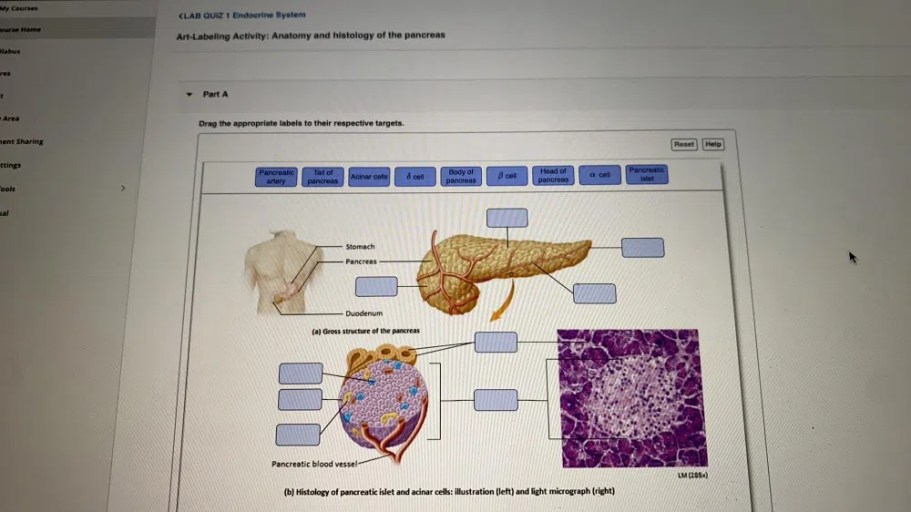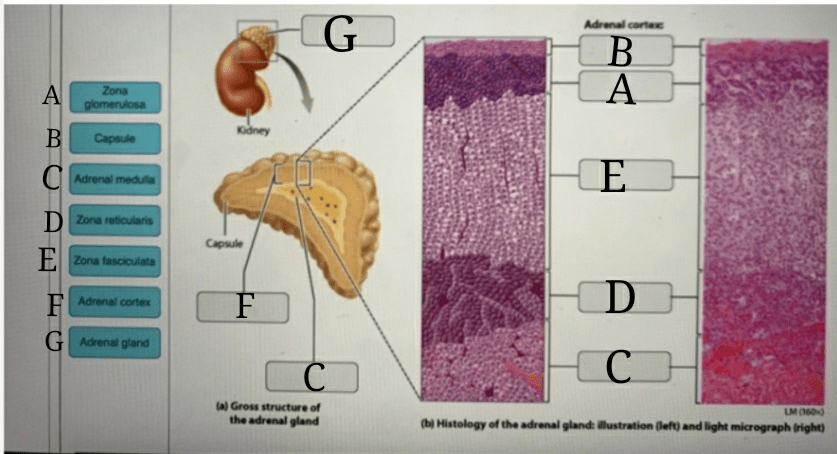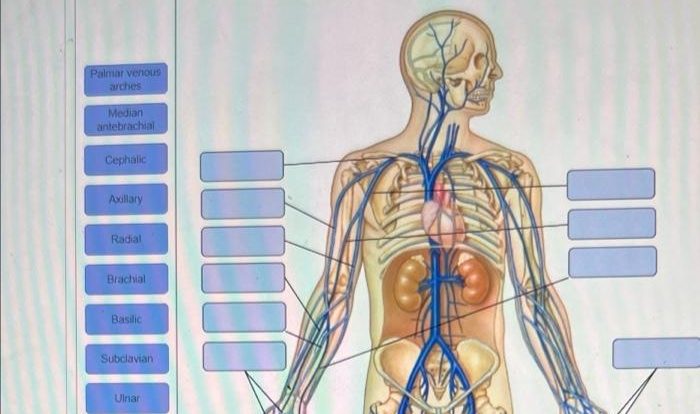In the realm of art and science, the art-labeling activity: anatomy and histology of the pancreas stands as a captivating intersection, where artistic expression meets the intricacies of human biology. This activity offers a unique opportunity to delve into the intricate structures and functions of the pancreas, enhancing our understanding and appreciation of this vital organ.
The pancreas, tucked away in the abdominal cavity, plays a pivotal role in digestion and metabolism. Its intricate anatomy, composed of exocrine and endocrine components, forms the foundation for its diverse physiological functions. Through art-labeling, we can visualize and communicate these complex features, fostering a deeper comprehension of the pancreas’s significance.
Introduction
Art-labeling activities involve the accurate and detailed depiction of anatomical structures in artistic representations. They play a crucial role in scientific communication, as they allow researchers to visualize and convey complex medical information to a wider audience. In the context of the pancreas, art-labeling is particularly important due to its intricate anatomy and histology.
Anatomy and Histology of the Pancreas

Gross Anatomy
The pancreas is a glandular organ located in the abdominal cavity, behind the stomach. It is elongated and somewhat flattened, extending from the duodenum to the spleen. The head of the pancreas is the widest part, located in the curve of the duodenum.
The body and tail of the pancreas extend to the left, with the tail reaching the spleen.
Microscopic Anatomy, Art-labeling activity: anatomy and histology of the pancreas
The pancreas is composed of two main types of tissue: exocrine and endocrine. The exocrine pancreas produces digestive enzymes that are secreted into the duodenum. It is composed of acinar cells, which produce the enzymes, and ductal cells, which line the ducts that carry the enzymes to the duodenum.
The endocrine pancreas produces hormones that are secreted into the bloodstream. It is composed of islets of Langerhans, which are clusters of cells that produce insulin, glucagon, and other hormones.
Methods for Art-Labeling the Pancreas

Traditional Methods
- Pen and ink: This method involves using a pen and ink to draw detailed illustrations of the pancreas.
- Watercolor: This method involves using watercolors to create realistic and visually appealing representations of the pancreas.
Modern Methods
- Digital painting: This method involves using digital tools to create realistic and detailed illustrations of the pancreas.
- 3D modeling: This method involves using 3D software to create three-dimensional models of the pancreas.
Applications of Art-Labeling in Pancreatic Research

Art-labeling can be used to visualize and communicate pancreatic anatomy and histology in a variety of ways.
- Medical illustrations: Art-labeling is used to create medical illustrations that can be used in textbooks, journals, and other educational materials.
- Patient education: Art-labeling can be used to create patient education materials that can help patients understand their own anatomy and histology.
- Research: Art-labeling can be used to create images that can be used in research studies to visualize and analyze pancreatic anatomy and histology.
Ethical Considerations in Art-Labeling the Pancreas: Art-labeling Activity: Anatomy And Histology Of The Pancreas
The use of human tissue in art raises a number of ethical considerations.
- Informed consent: It is important to obtain informed consent from donors or their families before using their tissue in art.
- Respect for the dead: It is important to treat the remains of the deceased with respect and dignity.
- Sensationalism: It is important to avoid sensationalizing or trivializing medical conditions in art.
FAQ Corner
What are the ethical considerations in art-labeling the pancreas?
Art-labeling involving human tissue raises ethical concerns, including obtaining informed consent from donors or their families and ensuring that the portrayal does not sensationalize or trivialize medical conditions.
How can art-labeling be used in pancreatic research?
Art-labeling provides a powerful tool for visualizing and communicating pancreatic anatomy and histology, aiding in the education of medical students and the public, and potentially driving new discoveries in pancreatic research.
